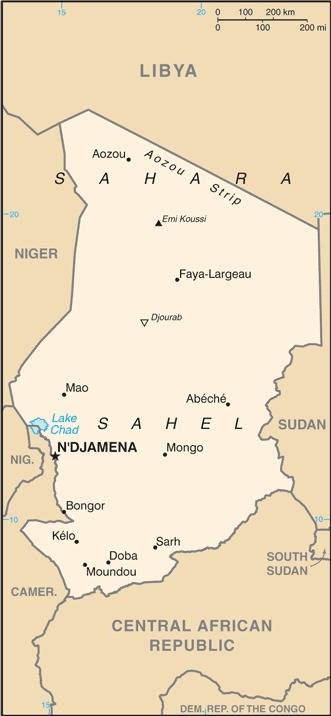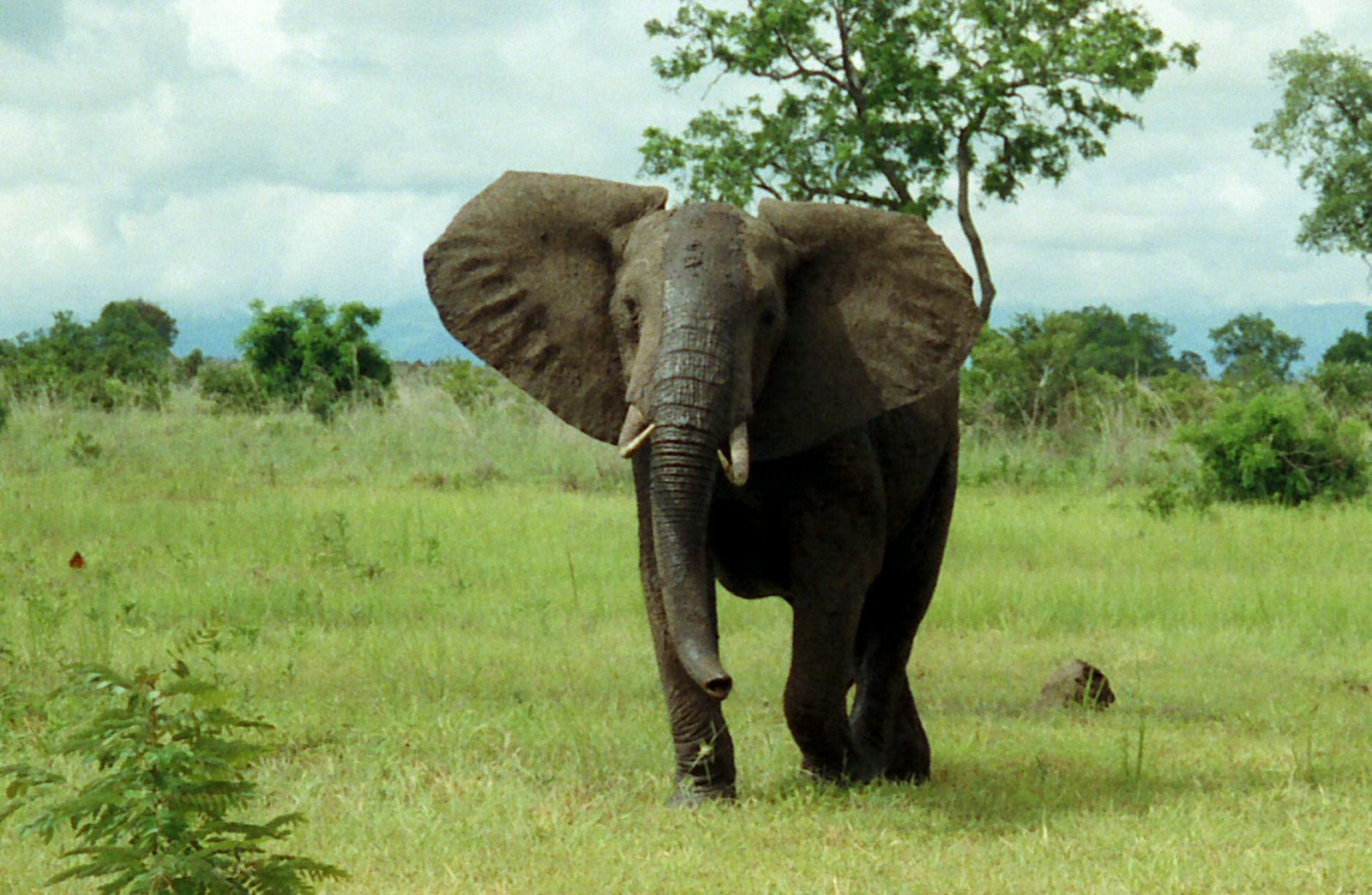186 Chad

Three equal vertical bands of blue (hoist side), gold, and red. The flag combines the blue and red French (former colonial) colors with the red and yellow (gold) of the Pan-African colors. Blue symbolizes the sky, hope, and the south of the country, which is relatively well-watered. Gold represents the sun, as well as the desert in the north of the country. Red stands for progress, unity, and sacrifice.
Flag courtesy of the CIA World Factbook

Map courtesy of the CIA World Factbook

An African bush elephant
Government
According to Britannica, under the constitution of 2018, Chad is a republic. The executive branch of the government is represented by the president, who serves as the head of state and government. The president is elected by universal suffrage to a six-year term, limited to two terms. A previous restriction that allowed the president to serve only two five-year terms was abolished in 2005, when a 2004 constitutional amendment that removed term limits was approved via national referendum; another change, made in the 2018 constitution, increased the president’s term to six years and, going forward, restored the two-term limit. The legislative branch is served by the National Assembly, comprising members who are directly elected to four-year terms; under the terms of the 2018 constitution, terms will be changed to five years with the next election. For administrative purposes, Chad is divided into regions.
After the unexpected death of Pres. Idriss Déby Itno in April 2020, the military dissolved the government and National Assembly and established a military council, the National Council of Transition, to govern for an 18-month period.
Chad’s judicial system comprises the Supreme Court and criminal and magistrate courts. A Constitutional Council and a High Court of Justice, the latter made up of National Assembly members elected by their peers to handle any cases of treason involving members of the government, were abolished under the 2018 constitution.
Civil Aviation Authority (CAA)
The CAA of the Republic of Chad is the official website that enables aviation companies to apply for all type of permits related to the Airspace and Airports in Chad.
Airspace
SkyVector – Google Maps – ADS-B Exchange
ICAO countries publish an Aeronautical Information Publication (AIP). This document is divided into three parts: General (GEN), En Route (ENR) and Aerodromes (AD). ENR 1.4 details the types of airspace classes they chose to adopt from classes A through G.
Drone Regulations
None found by the author.
However, should you, the reader, happen to stumble across something to the contrary, please email the author at FISHE5CA@erau.edu and you may be mentioned in the ACKNOWLEDGEMENTS section of this book by way of thanks for contributing to this free eBook!
Advanced Air Mobility (AAM) Regulations & Policies
None found by the author.
However, should you, the reader, happen to stumble across something to the contrary, please email the author at FISHE5CA@erau.edu and you may be mentioned in the ACKNOWLEDGEMENTS section of this book by way of thanks for contributing to this free eBook!
Advanced Air Mobility (AAM) News
None found by the author.
However, should you, the reader, happen to stumble across something to the contrary, please email the author at FISHE5CA@erau.edu and you may be mentioned in the ACKNOWLEDGEMENTS section of this book by way of thanks for contributing to this free eBook!
Short Essay Questions
Scenario-Based Question
You have been hired by a Drone Startup Company. Your boss has immediately assigned this job to you.
They need you to prepare a one-page memo detailing the legalities of using a drone to film elephant poachers in Chad, pictured above.
They need you to mention any national laws and local ordinances.
They specifically want to know what airspace (insert pictures) you will be operating in and whether or not you need an airspace authorization.
Does it matter whether or not you are a citizen of the country?
Lastly, there is a bonus for you if, as you scroll through this chapter, you find any typos or broken links!
Short Essay Questions
- What are the drone categories?
- How is registration addressed?
- How is remote ID addressed?
- What are the model aircraft rules?
- What are the commercial drone rules?
- Are there waivers or exemptions to the rules? If so, for what?
- Would you share a link to an interactive airspace map?
- How is BVLOS addressed?
- How can you fly drones at night?
- How can you fly drones over people?
- Where do you find drone NOTAMs?
- What are the rules for drone maintenance?
- What are the rules for an SMS program?
- What are some unique rules not mentioned above?
- What are the C-UAS rules?
- What are the AAM rules?

